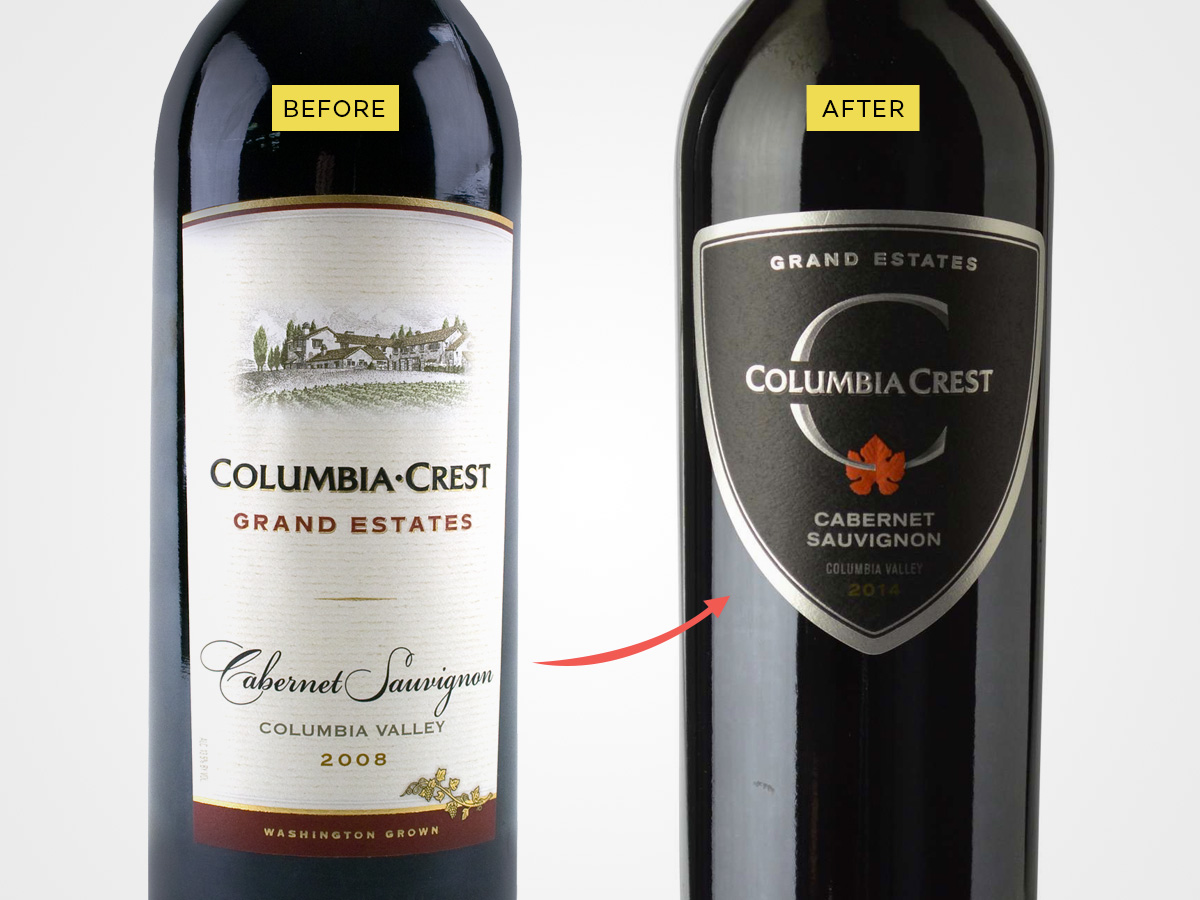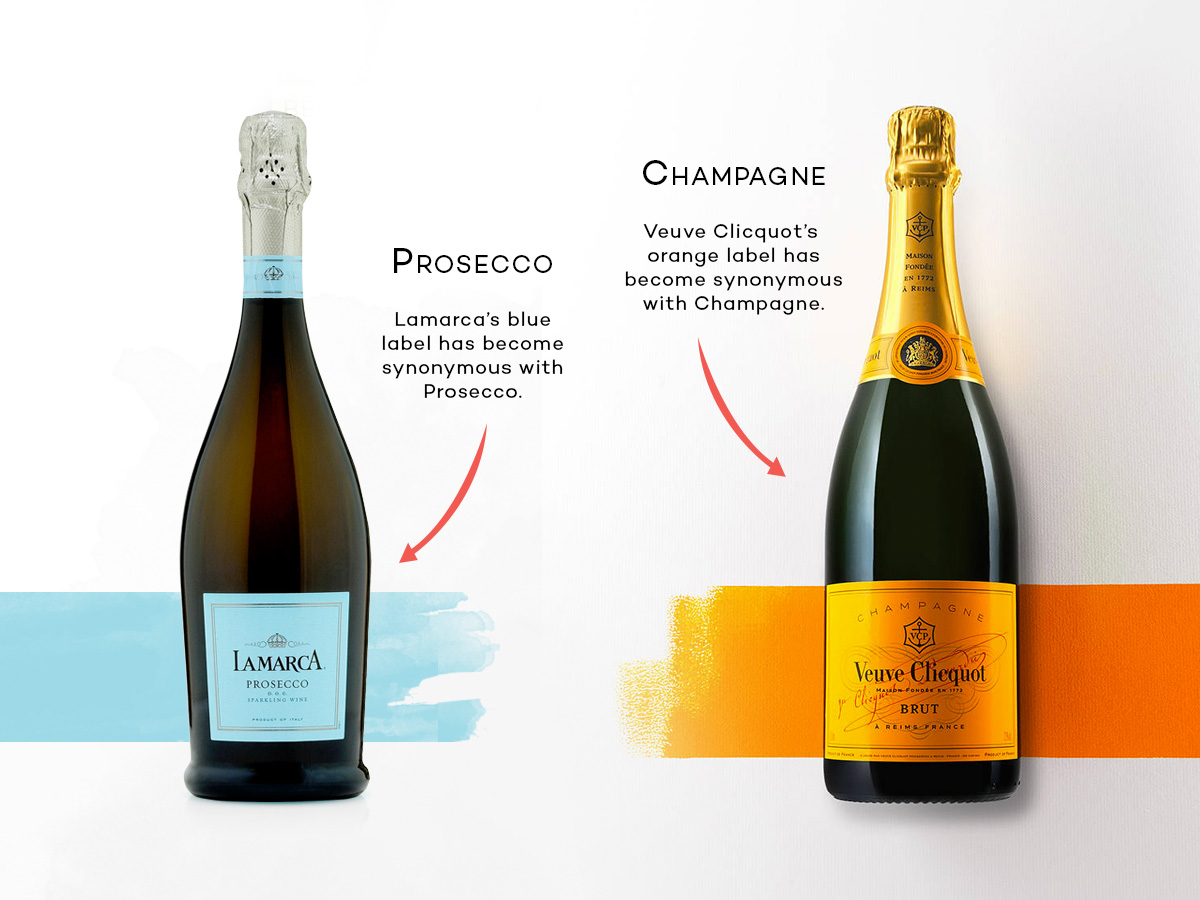Looking for a new varietal or bottle of wine to drink when you’re just starting to explore the world of wine can lead to a bit of exasperation. The process usually involves starting with what you know, followed by a comparison of prices and discounts, and then label gawking until you find something… and then you’re still not sure if it will be good!
Wine labels play an important role in our decision making process, even if we don’t realize why. Let’s take a look at how wine labels influence our choices and affiliation with brands, along with some tips on how to look past the design on the bottle for pertinent information.

Columbia Crest’s “Grand Estates” rebrand before and after. Which one looks more tasty?
Wine Labels Are Paramount to Developing a Brand
Case Study: Columbia Crest
Wine brands and luxury wines take labels very seriously. For example, the Columbia Crest Grand Estates brand by Ste Michelle Estates went from a “traditional” look to “modern classic” design and saw growth go from 2% to 7.5% annually with the new label design. This might not seem like much, but when you’re talking about a wine with an annual production of 3.6 million bottles (300,000 cases), the percentages are tremendous!

Two wines with label colors that have become synonymous with an entire style of wine: Lamarca Prosecco = light blue and Veuve Clicquot (“voove kleek-oh”) Champagne = orange.
Labels Can Becomes Synonymous With a Style of Wine
Just like asking for a Kleenex instead of tissue, some wine labels have become synonymous with entire wine regions or styles of wine. The styles most affected by this are sparkling wines. Two brands (Lamarca and Veuve Clicquot) have developed paramount recognition in terms of their brand familiarity. The subtle messaging of the label coloring and design influences buying decisions based on what people expect a bottle of that style of wine to look like. In the case of Champagne, you might prefer a yellow or orange label without even realizing it, or for Prosecco, you might want a blue label.
What This Means For Wine Buyers
For most of us, labels are subliminal: we don’t even realize the effect that they have on our buying decisions. Of course, even if you are aware of what’s going on, it’s hard to move past the picking-a-wine-by-the-label strategy. There is one thing, though, that you can start paying attention to now that will get you past branding: wine provenance.
Wine Provenance
If you look past the design, there is a small amount of useful information available on the label that indicates a wine’s basic provenance. If you know nothing else about the wine, the provenance is the first thing to investigate for more information about the wine’s quality.
Region
Fundamentally, wine is an agricultural product that is grown in a specific place. In today’s wine market, most bulk wines are sourced from a variety of places and have more generalized regional information, whereas wines created from a specific place will have a specific location (or even vineyard) indicated on the label. Looking for wines sourced from a more specific location is a good way to improve your shot of getting a higher quality wine.
Classification Level
In places like France, Italy, and Spain, wine regions have classifications associated with the wines, which require a certain minimum quality. As you can imagine, each country and each region has their own tier of classification. For example, Prosecco has several tiers of quality classification in which Prosecco DOC is the most basic and Prosecco Conegliano Valdobbiadene Superiore DOCG is a step above in terms of quality classification. Paying attention to these classification levels on the bottle can help you delve into better wines from the same region.
Read more about the major classification rules for the US, France, Italy, and Spain.
Drink Better Wine
After this reading this I hope you are encouraged to pay more attention to wine provenance on your favorite bottles, and find great-tasting wines regardless of good marketing!
Special thanks to Ste Michelle Wine Estates who provided us with detailed information about their Grand Estates rebranding project.
Wine Folly is your independent source for wine education and does receive any funds to feature wines.


